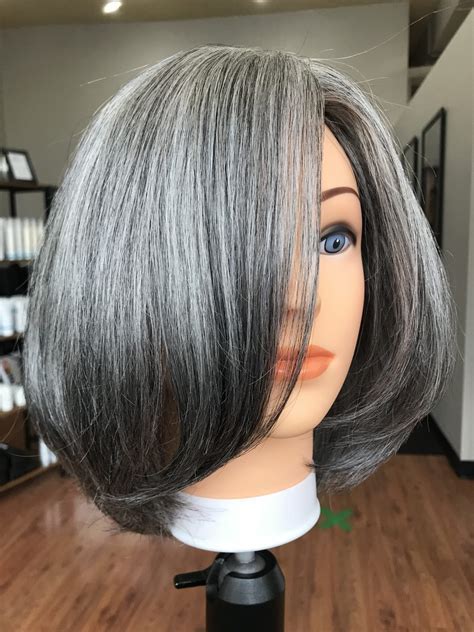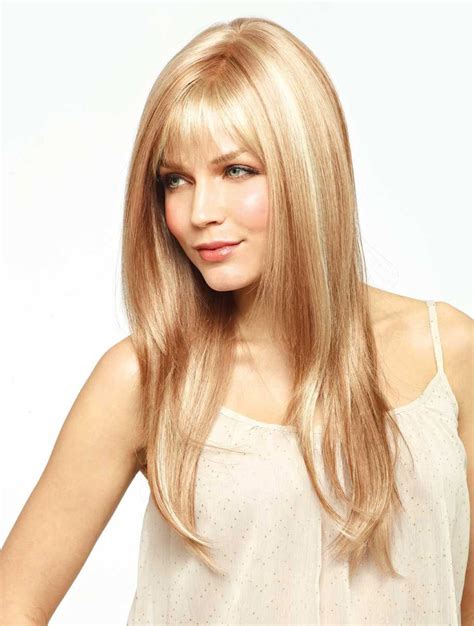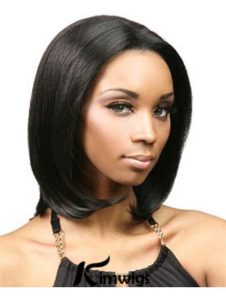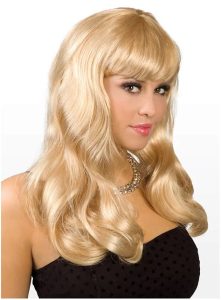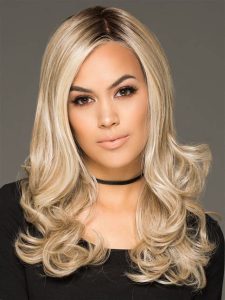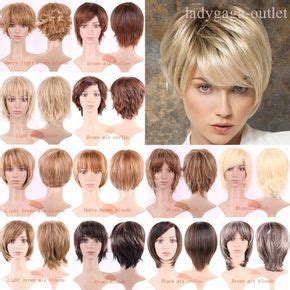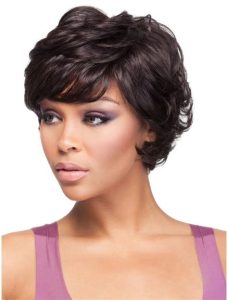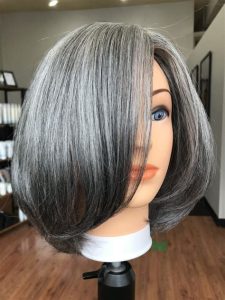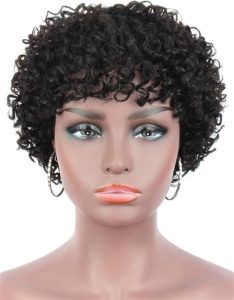2025: Monofilament vs. Classic Blonde Shoulder Length Wigs
Introduction
Straight Monofilament Blonde Shoulder Length Classic Cut Wigs are a popular choice for women who seek a natural-looking, low-maintenance wig. However, they are not the only option on the market. Classic wigs and other types of wigs offer their own unique benefits and drawbacks. In this article, we will compare and contrast the different types of wigs to help you make the best decisions for your needs.
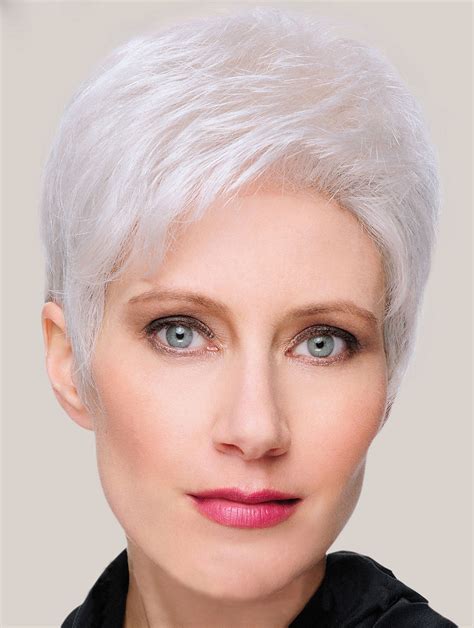
Monofilament VS. Classic Wigs
The main difference between a monofilament wig and a classic wig is the way the hair is attached to the cap. In a monofilament wig, the hair is individually hand-tied to a sheer, nylon mesh cap. This creates a more natural appearance, as the hair can move and flow like real hair. Classic wigs, on the other hand, have the hair sewn onto a lace or fabric cap. This can create a less natural look, as the hair cannot move as freely.
Pros and Cons of Monofilament Wigs
Pros:
– Natural appearance
– Comfortable to wear
– Breathable
– Durable
– Can be styled in a variety of ways
Cons:
– More expensive than classic wigs
– Requires special care
– Not as easy to find
Pros and Cons of Classic Wigs
Pros:
– Less expensive than monofilament wigs
– Easier to find
– More durable
– Requires less care
– Available in a wider variety of styles
Which Type of Wig Is Right for You?
The best type of wig for you depends on your individual needs and preferences. If you are looking for a natural-looking wig that is comfortable to wear, a monofilament wig may be your best choice. However, if you are on a budget or you want a wig that is easy to care for, a classic wig may be a better option.
Other Types of Wigs
In addition to monofilament and classic wigs, there are a number of other types of wigs on the market, including:
- Lace front wigs have a lace front that creates a natural-looking hairline.
- Full lace wigs have a lace cap that covers the entire head, giving you the most natural look possible.
- Synthetic wigs are made from synthetic fibers, which are less expensive and easier to care for than human hair wigs.
- Human hair wigs are made from real human hair, which gives them the most natural look and feel.
How to Choose the Right Wig
When choosing a wig, it is important to consider the following factors:
- Your face shape
- Your hair type
- Your lifestyle
- Your budget
It is also important to try on different wigs to see how they look and feel before you buy one.
Caring for Your Wig
Once you have chosen a wig, it is important to take care of it properly to extend its lifespan. Here are a few tips:
- Wash your wig regularly with a mild shampoo and conditioner.
- Avoid using harsh chemicals or heat styling tools on your wig.
- Store your wig in a cool, dry place when you are not wearing it.
Conclusion
Wigs can be a great way to change your look or to cover up hair loss. However, it is important to choose the right wig for your needs and to take care of it properly. By following the tips in this article, you can find the perfect wig that will give you a natural and beautiful look.
FAQs
- What are the different types of wigs?
There are many different types of wigs, including monofilament wigs, classic wigs, lace front wigs, full lace wigs, synthetic wigs, and human hair wigs.
- How do I choose the right wig for me?
When choosing a wig, it is important to consider your face shape, hair type, lifestyle, and budget. It is also important to try on different wigs to see how they look and feel before you buy one.
- How do I care for my wig?
It is important to wash your wig regularly with a mild shampoo and conditioner. Avoid using harsh chemicals or heat styling tools on your wig. Store your wig in a cool, dry place when you are not wearing it.
- How long will my wig last?
The lifespan of a wig depends on a number of factors, such as the type of wig, how often it is worn, and how well it is cared for. With proper care, a wig can last for several years.
- Where can I buy a wig?
Wigs can be purchased online or at wig stores.
- How much does a wig cost?
The cost of a wig varies depending on the type of wig, the quality of the wig, and the length of the wig. Wigs can range in price from $100 to $1,000 or more.
- Can I sleep in my wig?
It is not advisable to sleep in your wig. Sleeping in your wig can cause the wig to become matted and tangled.
- Can I swim in my wig?
It is not advisable to swim in your wig. Swimming in your wig can damage the wig and cause it to become tangled.
Current Status and What We Can Do
The wig industry is constantly evolving, with new types of wigs and new technologies being developed all the time. However, there are still some challenges that need to be addressed. One challenge is the cost of wigs. Wigs can be expensive, especially high-quality wigs. Another challenge is the lack of diversity in wigs. Wigs that are designed for people of color are often difficult to find.
There are a number of things that can be done to address these challenges. One is to increase funding for wig research and development. Another is to increase the awareness of wigs and the benefits they can provide. Finally, it is important to continue to advocate for diversity in wigs.
By working together, we can create a world where everyone has access to high-quality, affordable wigs that make them feel confident and beautiful.
Useful Tables
Table 1: Comparison of Monofilament and Classic Wigs
| Feature | Monofilament Wig | Classic Wig |
|---|---|---|
| Appearance | More natural | Less natural |
| Comfort | More comfortable | Less comfortable |
| Breathability | More breathable | Less breathable |
| Durability | Less durable | More durable |
| Cost | More expensive | Less expensive |
Table 2: Comparison of Different Types of Wigs
| Type of Wig | Appearance | Comfort | Breathability | Durability | Cost |
|---|---|---|---|---|---|
| Monofilament wig | More natural | More comfortable | More breathable | Less durable | More expensive |
| Classic wig | Less natural | Less comfortable | Less breathable | More durable | Less expensive |
| Lace front wig | More natural | More comfortable | More breathable | Less durable | More expensive |
| Full lace wig | Most natural | Most comfortable | Most breathable | Less durable | Most expensive |
| Synthetic wig | Less natural | Less comfortable | Less breathable | More durable | Less expensive |
| Human hair wig | Most natural | Most comfortable | Most breathable | Less durable | Most expensive |
Table 3: Benefits of Wigs
| Benefit | Description |
|---|---|
| Can change your look | Wigs can be used to change your hair color, style, and length. |
| Can cover up hair loss | Wigs can be used to cover up hair loss caused by cancer, alopecia, or other medical conditions. |
| Can protect your hair | Wigs can protect your hair from the sun, wind, and other environmental damage. |
| Can be a fun way to experiment with different styles | Wigs can be a fun way to try out different hairstyles without having to commit to a permanent change. |
Table 4: Challenges Facing the Wig Industry
| Challenge | Description |
|---|---|
| Cost | Wigs can be expensive, especially high-quality wigs. |
| Lack of diversity | Wigs that are designed for people of color are often difficult to find. |
| Lack of research and development | The wig industry is not well-funded, which limits the development of new types of wigs and new technologies. |

